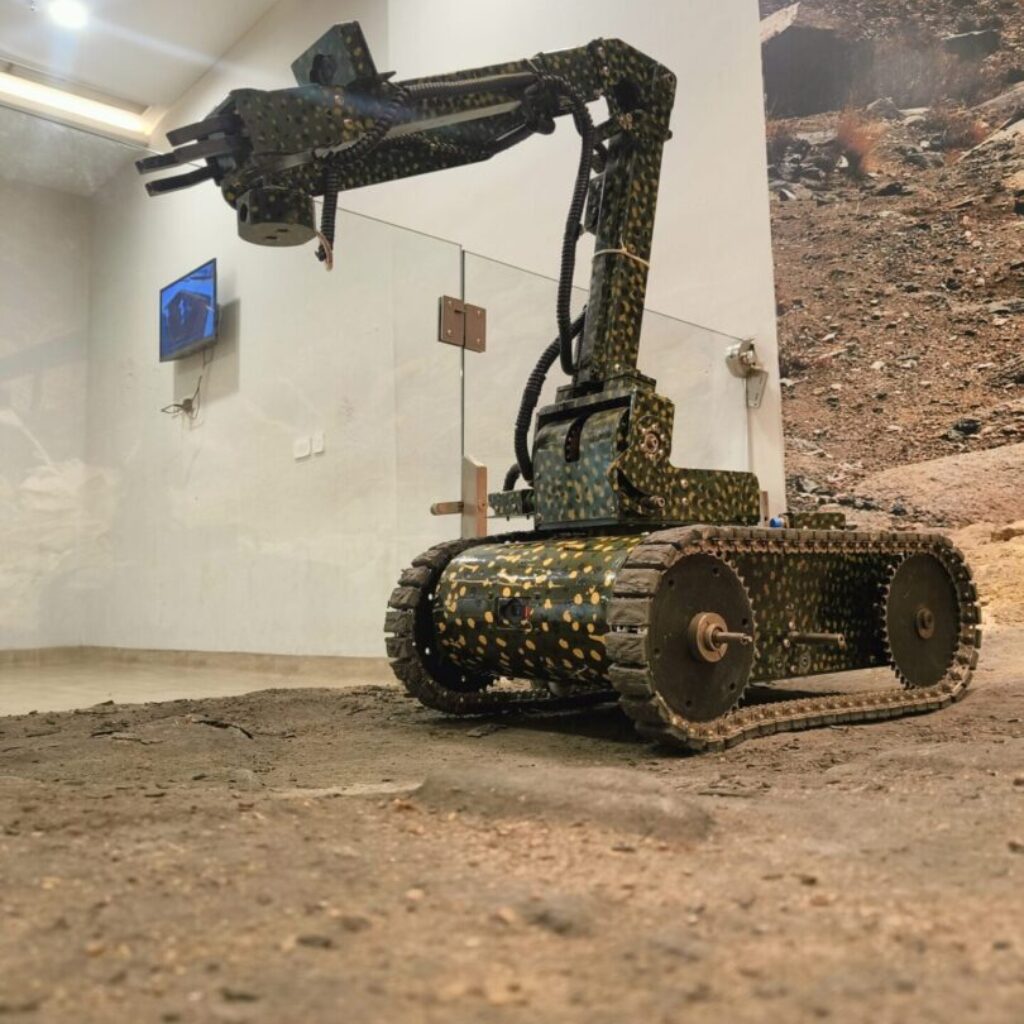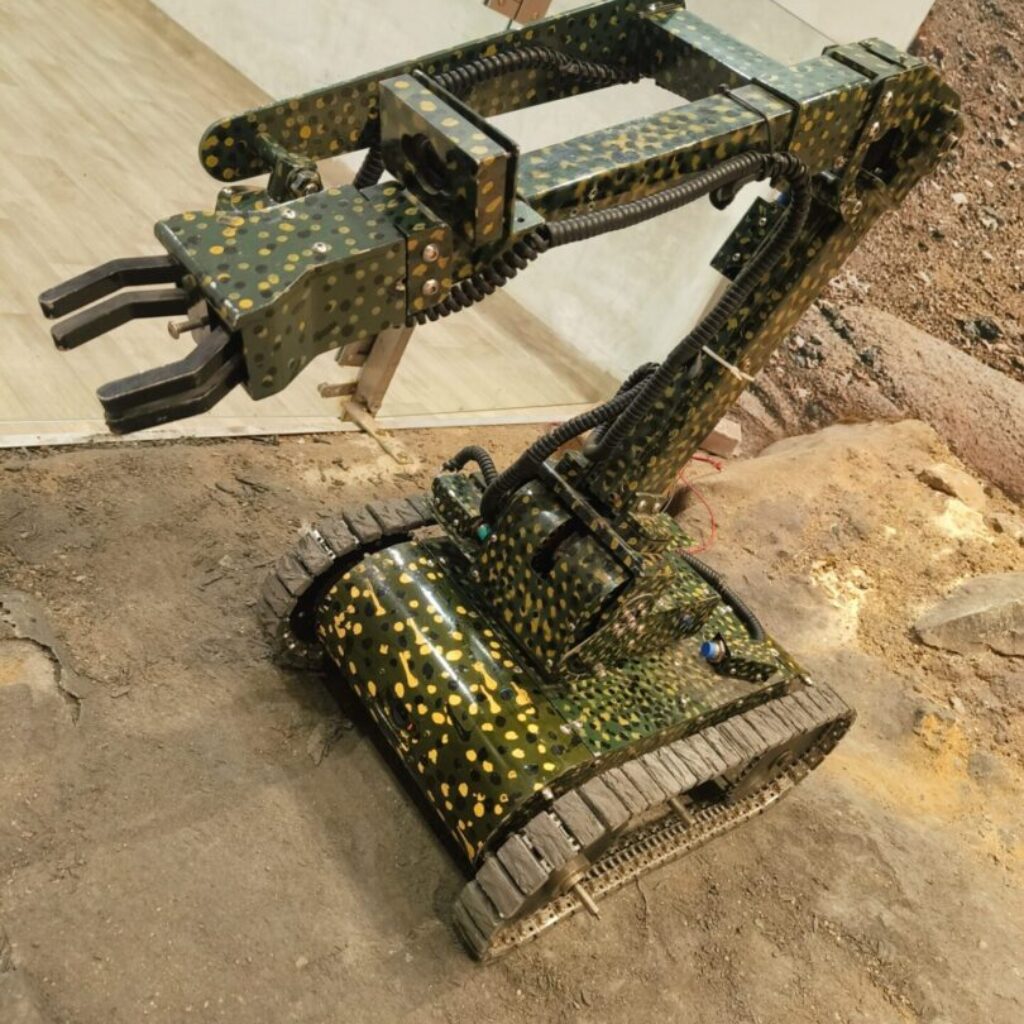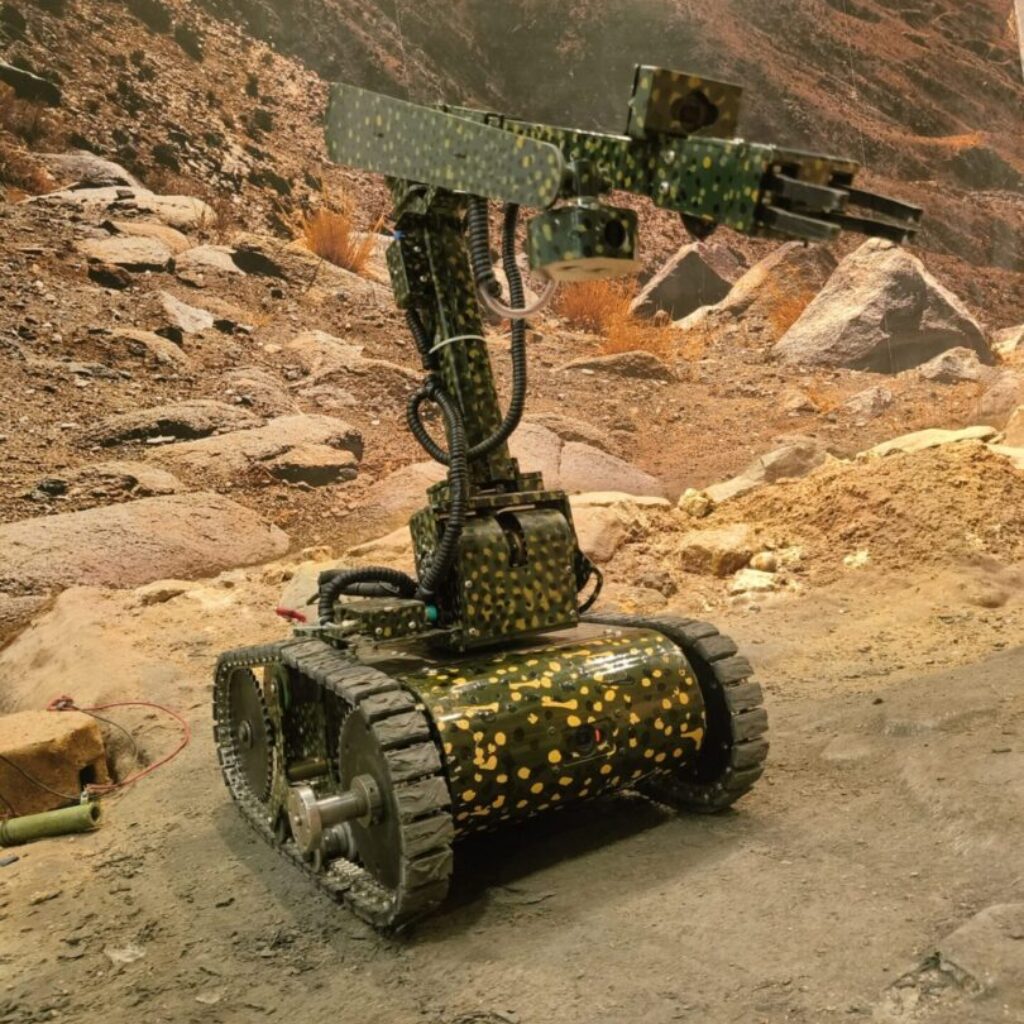Terrain Robot
Terrain Robot
The Mobile_All Terrain Vehicle is an agile, mobile robot used for bomb disposal, search, reconnaissance, and other dangerous missions. It can easily move on rough terrain, drive through mud, and operate in all weather conditions. It is mounted with a Manipulator’s arm with a lift capacity of up to 5kg. Able to climb stairs and slopes up to 45 degrees. Equipped with multiple cameras, audio capability and automatic obstacle avoidance.
Designs of terrain robots vary widely depending on their intended use. Some may have legs for traversing uneven ground, while others may have wheels or tracks with advanced suspension systems for stability and traction. Many modern terrain robots incorporate sophisticated sensing technologies like LiDAR, cameras, and GPS for navigation and obstacle avoidance. Overall, terrain robots play a crucial role in situations where human access is limited or hazardous, offering a safer and more efficient means of exploration, rescue, and operation in challenging environments.

Types of Terrain Robots
Wheeled Robots
Simple Wheeled Robots: These robots move on wheels and are suitable for flat or mildly uneven terrain.
All-Terrain Wheeled Robots: Designed with robust wheels and suspension systems to traverse rougher terrains such as rocky surfaces or uneven ground.

Tracked Robots
Tracked robots use continuous tracks similar to those found on tanks, which provide better traction and stability on rough terrain such as mud, sand, and rocky surfaces. They are often used in outdoor environments where wheeled robots might struggle.

Crawler Robots
Crawler robots move using a crawling motion, which allows them to traverse uneven surfaces, stairs, and other challenging terrain. They are commonly used in applications such as inspection, maintenance, and search and rescue.

OBJECTIVES
Enhanced Mobility
Enable robots to navigate challenging terrains with agility, stability, and efficiency, thereby extending their operational reach and effectiveness.
Autonomy and Intelligence
Develop autonomous capabilities that allow robots to make real-time navigation decisions, adapt to unforeseen obstacles, and optimize path planning.
Sensing and Perception
Improve sensor capabilities for accurate terrain perception, including terrain classification, obstacle detection, and environmental monitoring.
Safety and Reliability
Prioritize the safety of both the robot and its surroundings, incorporating fail-safe mechanisms, collision avoidance systems, and robust construction.Ensure reliability and robustness in harsh operating conditions, minimizing downtime and maintenance requirements.
Why Need Terrain Robots ?
Terrain robots are essential for various reasons, spanning multiple industries and applications. Here are some key reasons why terrain robots are needed:
1. Exploration and Research
Terrain robots are vital for exploring remote, hazardous, or inaccessible environments where human presence is impractical or unsafe. This includes environments such as deep sea, polar regions, outer space, and disaster zones. Robots can collect data, gather samples, and conduct scientific experiments in these environments, advancing our understanding of the world around us.

2. Search and Rescue

In disaster scenarios such as earthquakes, floods, or collapsed buildings, terrain robots can navigate through debris, rubble, and hazardous terrain to locate and rescue survivors. Their ability to access confined spaces and operate in dangerous conditions can significantly improve the effectiveness of search and rescue operations, saving lives in critical situations.
3. Military and Defense
Terrain robots play a crucial role in military and defense applications, where they are used for reconnaissance, surveillance, and combat support. Unmanned ground vehicles (UGVs) can gather intelligence, detect threats, and provide logistical support in combat zones, reducing risks to human personnel and enhancing operational capabilities.

4. Environmental Monitoring

Terrain robots are used for environmental monitoring and conservation efforts, such as wildlife tracking, habitat assessment, and pollution detection. Robots equipped with sensors can collect data on air quality, water quality, biodiversity, and climate change indicators, helping researchers and conservationists make informed decisions and take timely action to protect ecosystems and endangered species.
5. Construction and Infrastructure
Terrain robots are used in construction and infrastructure maintenance to perform tasks such as site surveying, inspection, and maintenance. Robots equipped with LiDAR, cameras, and other sensors can assess structural integrity, detect defects, and identify potential hazards in buildings, bridges, pipelines, and other infrastructure assets.Construction and Infrastructure

GALLERY






Contact Us
The latest Robot news and resources contact straight legal Point.
1168 Hamilton St #400, Vancouver, BC V6B 2S2
Telephone: +1-825-888-9393
bob@newagerobots.com, info@newagerobots.com
Useful Links
Copyright © techite all rights reserved.






